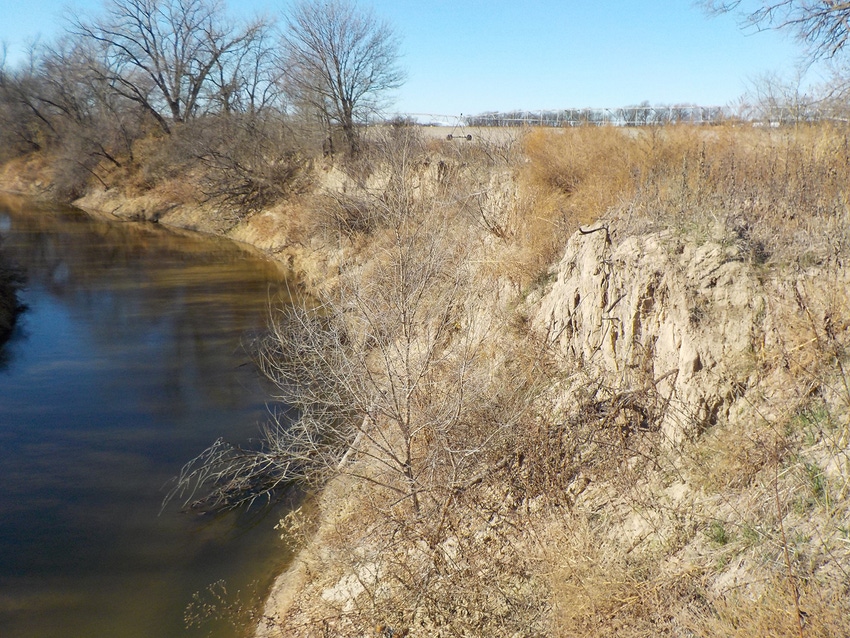One concern is whether older buffer strips have become saturated with pollutants and thus turn into a sink for pollutants to dump into nearby rivers.
April 15, 2019

A Kansas State University researcher has been examing the trees and grassways lining the steambanks of two major waterways meandering their way to Tuttle Creek Reservoir in northeast Kansas, to see just how well they may be keeping dangerous pollutants out of the river.
“Phosphorus and sediment are two of the major concerns that have been outlined in the Kansas Water Plan,” says Colby Moorberg, assistant professor in the K-State Department of Agronomy.
Moorberg is in the second of a two-year project looking at how well buffer strips essentially soak up phosphorus and sediment before those pollutants can get into waterways. In addition to the Big Blue and Little Blue, he’s also looking at the Republican River that feeds into Milford Lake, near Junction City.
Phosphorus is best known for creating an environment in which toxic algae blooms can form in water, making it unsafe for recreation and other human and livestock uses. Milford Lake was closed to the public at various times the past two years due to dangerous levels of algae blooms.
Sediment is the soil or other organic material that fills the bottom of a waterway, especially during times when streambanks erode. Sediment prevents reservoirs from storing more water, which is a concern considering that most reservoirs are designed to aid in flood protection for nearby communities.
“The one thing I was curious about is that these buffer strips have been a common practice for 30 years, and they’re still being put in, but no one has done a long-term assessment of them, to see if they fully function the way that we expected them to,” Moorberg says.
Buffer strips are thought to be a good way to absorb pollutants as they move across the ground. The two most common are grassed buffer strips (filter strips), and forested (riparian buffer strips).
Moorberg set up a study in which he is looking at grassed and forested strips that have been installed within various timeframes – two to five years, five to 15 years and more than 20 years. He says one concern is whether older buffer strips have become saturated with pollutants and thus turn into a sink for pollutants to dump into nearby rivers.
“The worst case scenario is if they are all becoming saturated, and if they erode at all, then they could potentially be a source of phosphorus as opposed to a sink,” he says. “That would be a bad thing.”
So far, Moorberg said the researchers have a year’s worth of data. They are tracking the level of pollutants in the adjacent soils and plan to build 3-D models of the two watersheds. What he hopes to find out by the end of this year is whether the buffer strips are able to function as a natural ecosystem, even as the forested areas age.
“If they do,” he says, “there’s no worry because our status quo of getting these areas started and not touching them might be the best way to manage them.”
But if the older buffer strips are simply a gathering point for heavy loads of pollutants, Moorberg and his team may have to determine the best strategies to routinely remove phosphorus, either by haying grass or harvesting trees and the phosphorus contained in them.
“Or we may need to do more to prevent streambank erosion,” Moorberg says. “That’s really the main mechanism by which that phosphorus that’s in the soil would be released and head downstream.”
K-State’s work on this project is being done in coordination with the Kansas Forest Service, with cooperation from landowners, the U.S. Department of Agriculture’s Natural Resources and Conservation Service and local conservation districts.
Source: K-State Research and Extension, who is solely responsible for the information provided, and wholly owns the information. Informa Business Media and all its subsidiaries are not responsible for any of the content contained in this information asset.
You May Also Like



